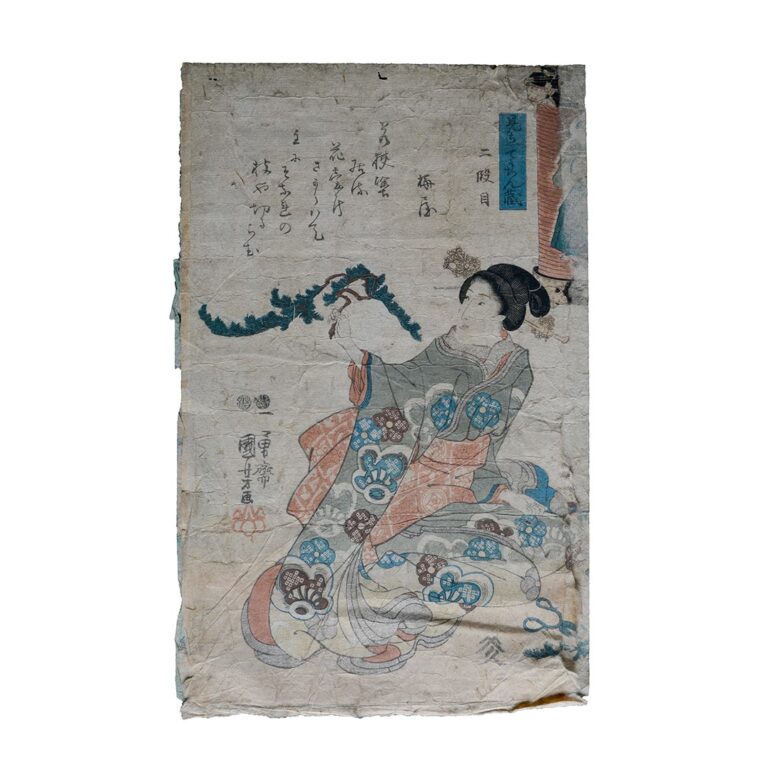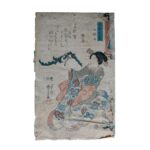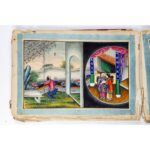Japanese woodblock print or Ukiyo-e Parody of the Chushingura in Lanterns – Act 2
The second of eleven prints in the series Chūshingura Parody on Lanterns (Mitate chōchingura 見立挑灯蔵), which accompany the play Kanadehon chūshingura 仮名手本忠臣蔵 or Treasury of Faithful Servants. It is a famous story about bushido (Jp. bushido 武士道), the samurai code of chivalry, and loyalty, in which 47 masterless samurai (ronin, Jap. rōnin 浪人) seek revenge for the death of their master. It depicts a seated woman holding a pine branch in her hand. To her right is half of a red lantern depicting a ronin.
To the left of the lantern is a poem by Umey: “In a vase on a lacquered stand, a branch resists, just like you, the master will carve it”. The song refers to one of the 47 ronin known as Momoi Wakasanosuke 桃井若狭之助. It is a play on the words wakasanori and wakasa nuri, a special traditional method of painting objects. It is written ... more
The second of eleven prints in the series Chūshingura Parody on Lanterns (Mitate chōchingura 見立挑灯蔵), which accompany the play Kanadehon chūshingura 仮名手本忠臣蔵 or Treasury of Faithful Servants. It is a famous story about bushido (Jp. bushido 武士道), the samurai code of chivalry, and loyalty, in which 47 masterless samurai (ronin, Jap. rōnin 浪人) seek revenge for the death of their master. It depicts a seated woman holding a pine branch in her hand. To her right is half of a red lantern depicting a ronin.
To the left of the lantern is a poem by Umey: “In a vase on a lacquered stand, a branch resists, just like you, the master will carve it”. The song refers to one of the 47 ronin known as Momoi Wakasanosuke 桃井若狭之助. It is a play on the words wakasanori and wakasa nuri, a special traditional method of painting objects. It is written with the same characters 若狭, but in this case it refers not to the lacquering process but to the lacquered stand. The poem also implies that Wakasanosuke defied his master, so that the master had him “cut” or killed like a pine branch on a bonsai tree. The poem also refers to the beauty depicted, as it may also indicate that the master will “engrave” her. (KH, JR)




































Do you have a comment or additional information about the subject?